 Rundlet-May House
Rundlet-May House
Front Kitchen
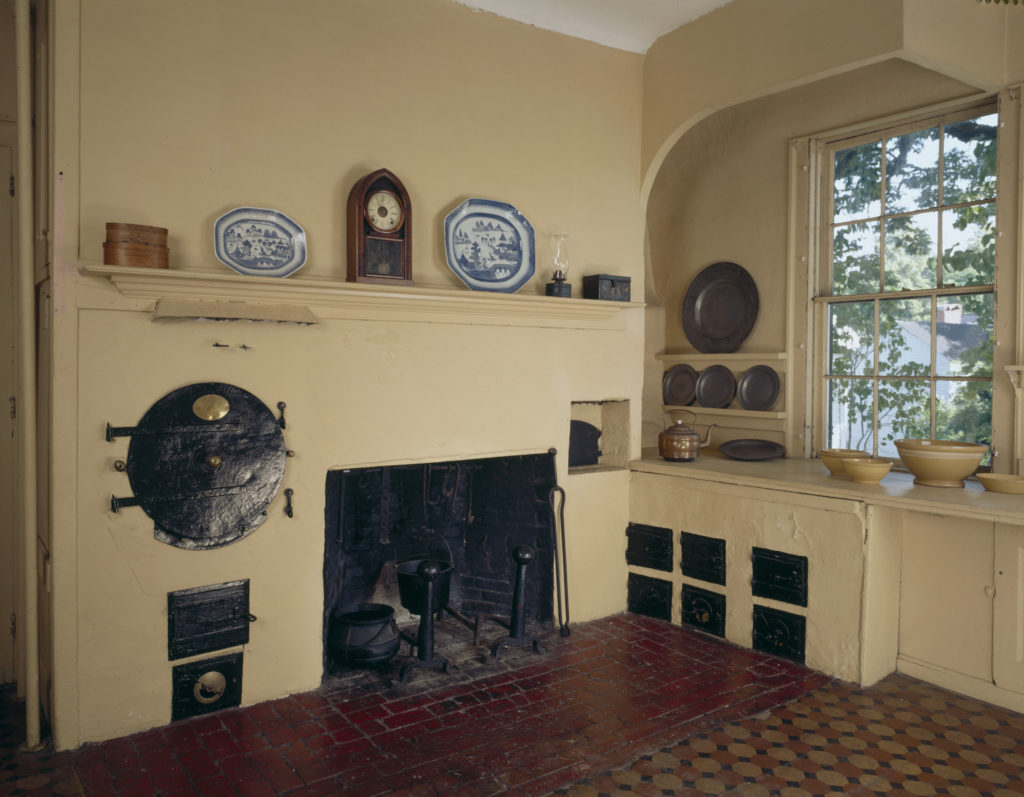
The Rundlets installed a Rumford kitchen, the latest in cooking technology, in their new mansion on Middle Street. Born Benjamin Thompson in North Woburn, Massachusetts, Count Rumford (1753-1814) moved to England during the American Revolution and while in various positions in Europe, he did extensive thermodynamic experiments that revolutionized eighteenth and nineteenth-century kitchen technology. Later generations of the family updated the kitchen with a modern sink and General Electric range (at left in the photo below), but kept the original Rumford kitchen intact.
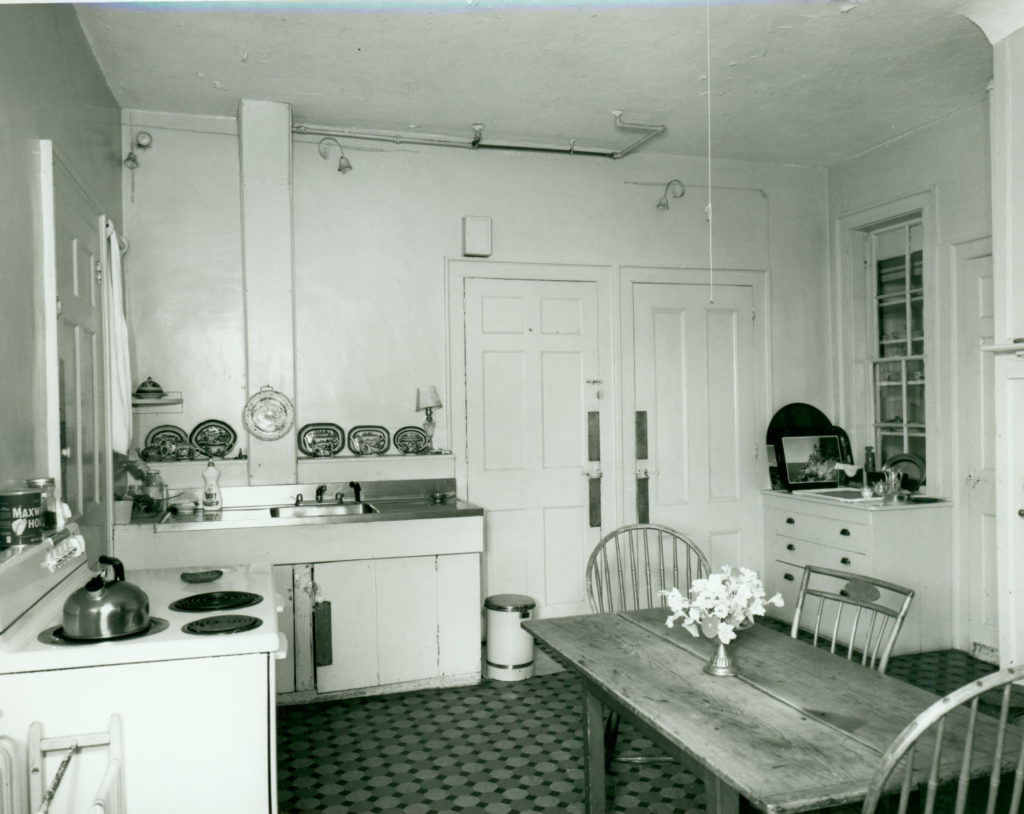
A much-loved copy of local cook and author Maria Parloa’s The Appledore Cook Book rests on the kitchen table in front of the Rumford Roaster; the book had several printings due to its popularity. Parloa had worked as a pastry cook at the Appledore House Hotel on Appledore Island, at the Isle of Shoals for many years. She was also one of the original founders of the Boston Cooking School in 1879. In the cookbook are recipes for everything imaginable to the nineteenth century palette, including dandelion and elderberry wine. Cooking brought much pleasure to the Rundlet and May household who benefited from such an elaborate kitchen facility; a favorite family recipe for Dundee marmalade still remains on a handwritten note inserted into the pages of the cookbook. The book was still in the kitchen when the house was acquired by Historic New England in 1973.
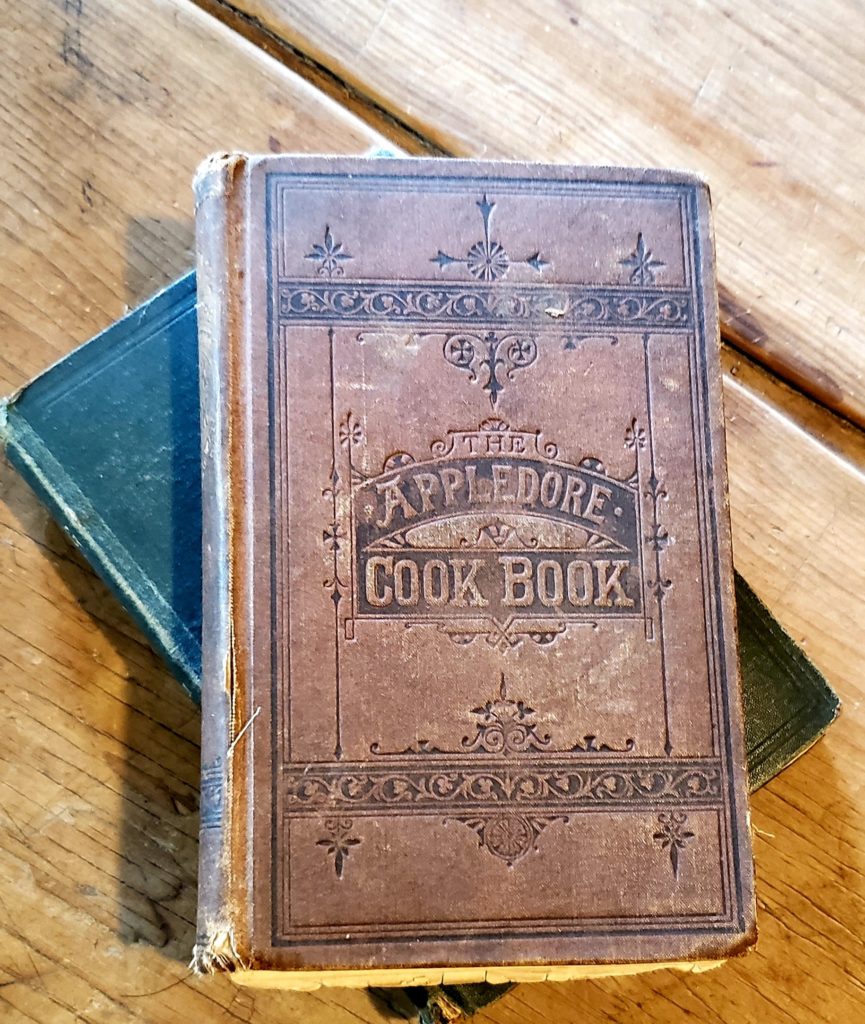
A Cutting Edge Kitchen
How the Rumford System WorkedThe Rumford Kitchen
The Rundlet-May kitchen is one of just a handful of intact Rumford kitchens in the country and includes a Rumford roaster, fireplace, and range.
The Rumford roaster consisted of a hollow cylinder of sheet iron, set into the brick work of the chimney unit. “Smoke canals” allowed the flames and heat to surround the roaster body providing constant and controlled heat. A drip pan with water collected juices and prevented drippings from burning on the roaster. In addition, the water produced steam, which combined with slow, steady cooking, resulted in a more moist and flavorful roast. A steam tube was used at the end of the roasting process to dry the air within the roaster and brown the meat. The “smoke canals” were connected to a smoke closet on the third floor in order to smoke meats during the roasting process in the kitchen, thus enabling a more efficient use of fuel.
On the other side of the Rumford fireplace is a range with a series of three fires, above each of which a pot or stew-pan fitted into a circular, iron-rimmed opening. The heat of each fire could be separately regulated by varying the draught through its ash-pit door and the smoke was carried away by flues leading through the brickwork to the main chimney.
The roasting oven was a hollow cylinder of sheet iron, set into the brick work of the chimney. 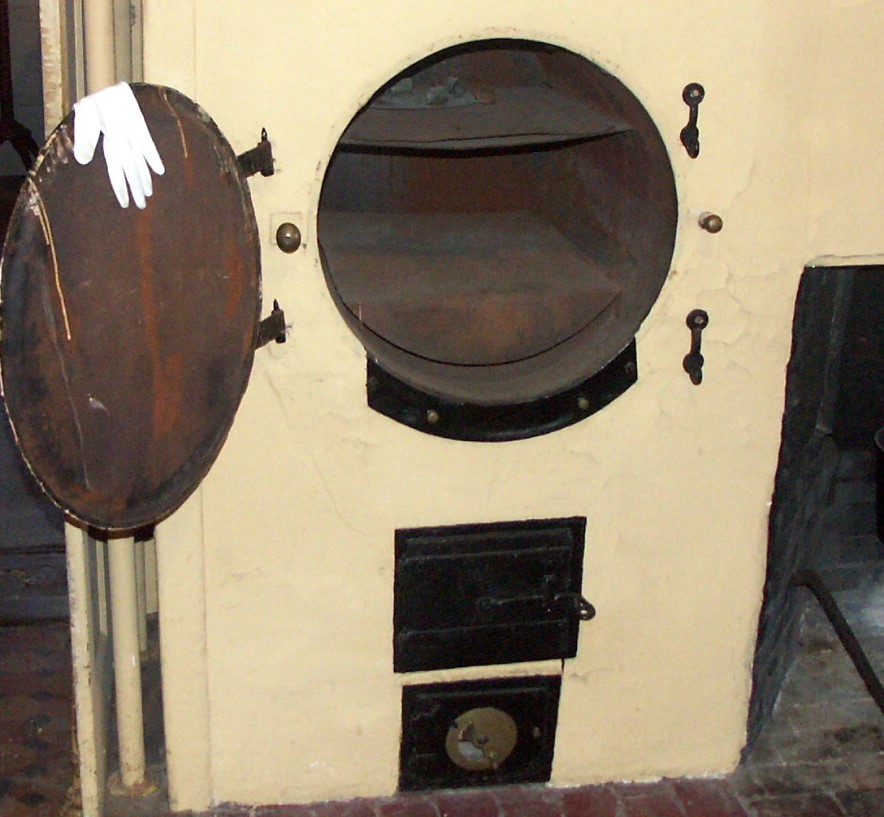
The roaster was heated by a small, square firebox directly under the oven where charcoal or mined coal were burned. The ashes fell into the second, lower box.
Smoke closets on the third floor of the house were fed by “smoke canals”. 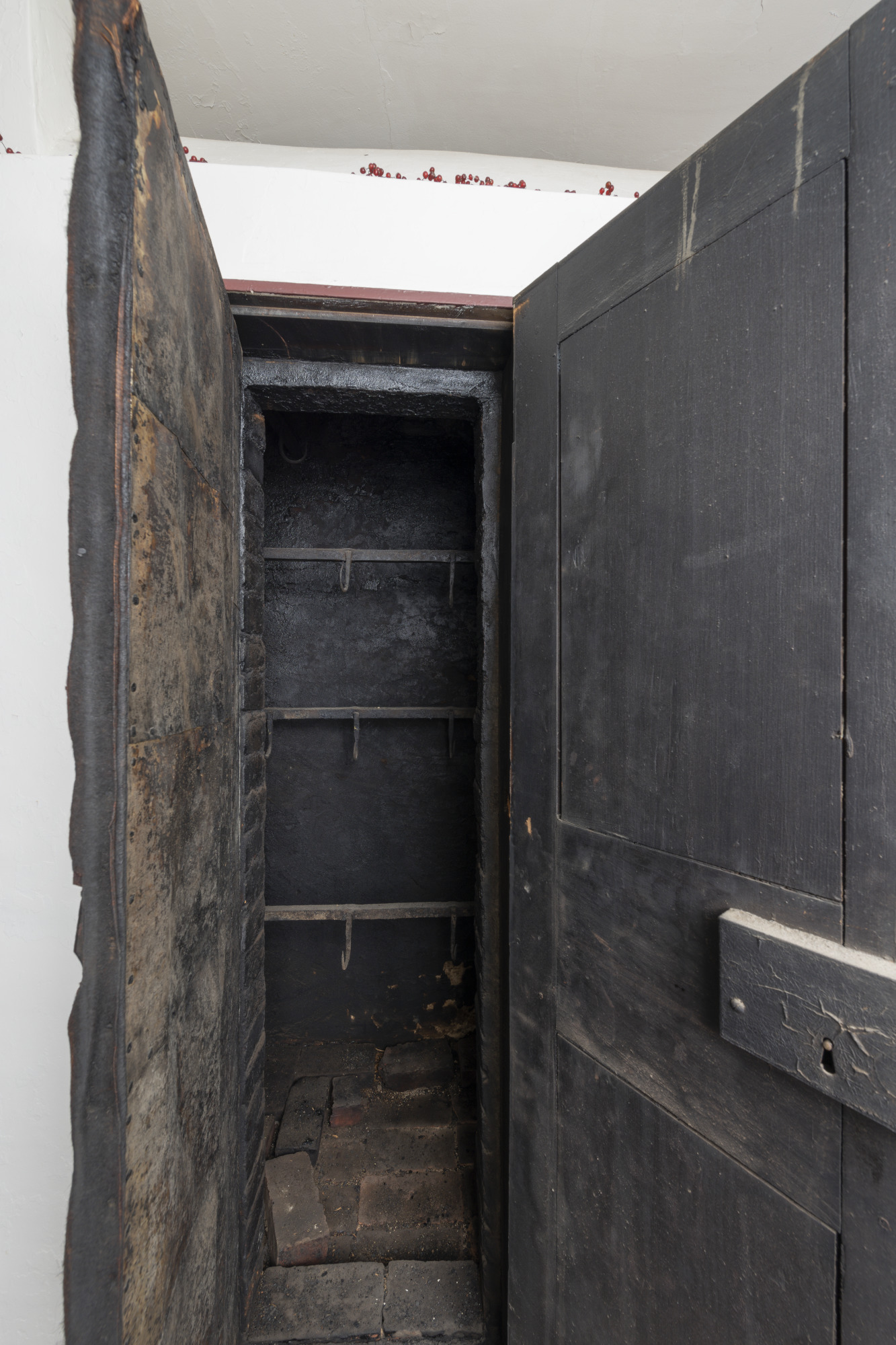
A long counter lifts off to reveal three individual boilers and a roaster each with its own fire box and ash pit beneath it. 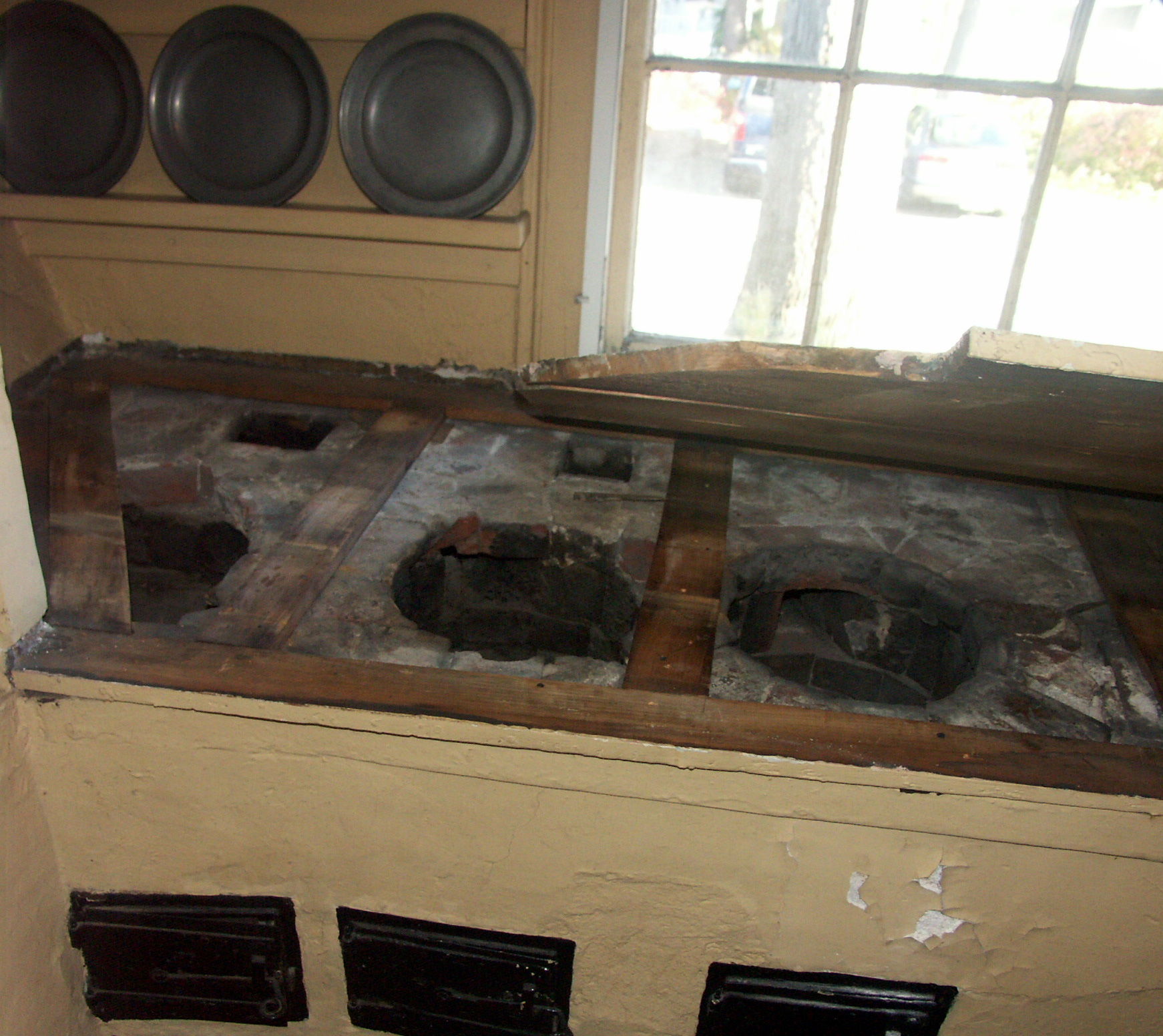
A Rumford fireplace with angled sides provides more heat and less smoke.
to learn more
Hidden Spaces in the Kitchen
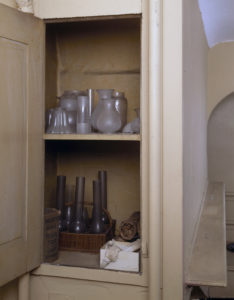 The door to the back staircase provided access to servants’ rooms and the nursery. A small cabinet next to the door and a spacious pantry beside the sink still contain ephemera left behind by four generations of Rundlet and May families. Access to the basement is from this room, which lead to the workings of the complex heating system of the house.
The door to the back staircase provided access to servants’ rooms and the nursery. A small cabinet next to the door and a spacious pantry beside the sink still contain ephemera left behind by four generations of Rundlet and May families. Access to the basement is from this room, which lead to the workings of the complex heating system of the house.